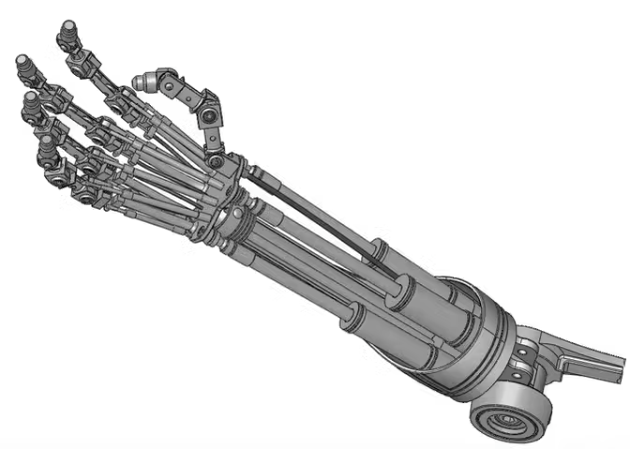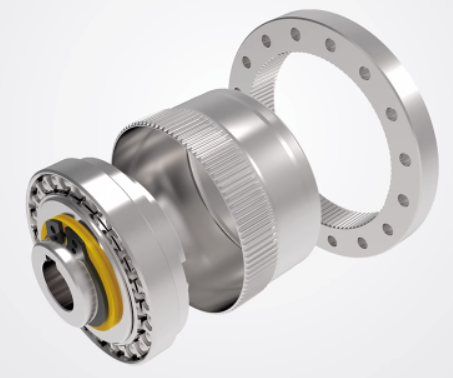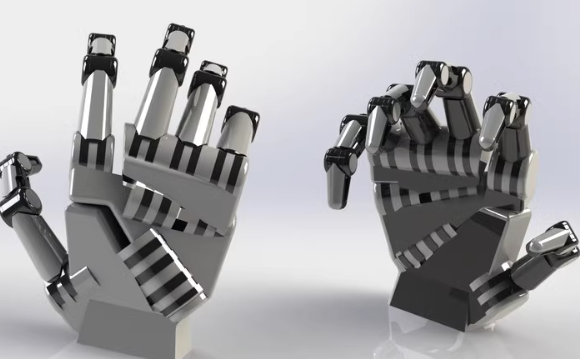Recently, the Beijing Municipal Government announced the “Beijing Robot Industry Innovation and Development Action Plan (2023-2025)”, proposing to accelerate the innovation and development of the robot industry.
The “Beijing Robot Industry Innovation and Development Action Plan (2023-2025)” was promulgated, and humanoid robots developed.

High-end robot arm joint – robot module manufacturer
From the macro to micro perspective, this program has played a guiding role in the development of Beijing’s robot industry, reflecting the government’s overall grasp of scientific and technological development, and can clear the dark clouds and see the blue sky in the context of rapid development, conform to the trend of the times, and push the robot industry to a new height.
The initial humanoid robot in the context of the times
Features of humanoid robots
Humanoid robots are “intelligent carriers”, which are “intelligent carriers” that can simulate human vision, touch, language, and even human emotions. Of course, the internal structure of this “smart carrier” is not just a joint, but also has a software system. On this basis, humanoid robots have the opportunity to access existing human life, enter all scenarios where humans already exist, and use all the tools that humans are using. And all our lives and production do not need to make any superfluous, additional changes for such robots.
Harmonic reducer industrial collaborative humanoid robot joint
In a sense, the humanoid robot is like a new “smart terminal”, like a smartphone.
Application scenarios of humanoid robots
At present, the iterative thinking of most domestic industrial robot manufacturers is to upgrade the products on the original products, so that users can get better services, so as to increase prices and obtain higher profits. This is called continuous innovation.
However, humanoid robot ontology has much higher requirements for intelligent software such as AI than industrial robots. The ultimate purpose of the humanoid robot is not to be used in a specific scene, it is to open up all the scenes in people’s production and life. In other words, humanoid robots are meant to turn the entire human society into a whole. So its downstream market capacity will be even greater. Therefore, we can say that this is a “disruptive innovation”.
The impact of humanoid robot applications on the market
When humanoid robot concept stocks rose wildly, the most concerned were some key components, such as control systems, servo motors, reducers, etc. For example, Tuopu Co., Ltd. has assembly line hinges in its products, and Sanhua Intelligent Company has rotary hinges; Wise Electric produces hollow cup motors, Jiangsu Leili Company produces sliding screws, planetary roller screws and hollow cup motors; Huichuan company produces servo motors; The green harmonics of the harmonic reducer are all good performance with the help of the humanoid robot concept.
The core components of the robot include a reducer, a servo motor and a controller. The reducer is the driving device of the robot, which directly affects the performance and reliability of the robot; The servo motor is the actuator of the robot, and its control accuracy determines the accuracy of the robot’s movement; The controller is a comprehensive control of the above three devices to ensure that the robot can run according to the predetermined trajectory. From the perspective of production costs, reducers, servo motors and controllers account for 70% of the production cost of the entire robot system.
Harmonic reducer industrial collaborative humanoid robot robotic arm joint transmission cup
However, the development of China’s robot industry is still in its infancy, and the localization rate of many key components is not high, which leads to high robot costs and some shortcomings in the supply chain. These problems are directly affecting the profitability of mechanical products.
Under such circumstances, domestic robot manufacturers want to reduce costs and increase efficiency, thereby enhancing their competitiveness. They can choose to reduce robot costs, optimize supply chains, lower product prices, and increase profits through sales. But in the long run, this is not conducive to the development of domestic brands. Therefore, in the end, only those who can survive can really control the underlying technology, or can really do the most basic and most in line with the needs of users.
Background analysis of policies related to humanoid robots in Beijing, China
Beijing has strong scientific research capabilities and advanced related technologies.
First of all, Beijing has strong scientific research capabilities and has a high level of research and rich experience in the field of robotics. Beijing has many universities and scientific research institutions, including the Chinese Academy of Sciences, Tsinghua University, Peking University and other well-known institutions, which have accumulated rich technical strength and professional knowledge in the field of robotics. In addition, Beijing has set up a number of national engineering laboratories and key laboratories, which are constantly exploring new robot technologies and promoting innovation and development in related fields.
There are many enterprises in Beijing, providing a favorable environment for the development of robots.
Secondly, there are many enterprises in Beijing, which has significant advantages in providing a favorable environment for the development of robots. In recent years, with the rapid development of China’s economy and the upgrading of industrial structure, more and more enterprises have begun to devote themselves to the research and application of robots. As an important engine of China’s economic development, Beijing has many high-tech enterprises and innovative enterprises, which actively explore new business models and market opportunities in the field of robotics, and provide solid support for the transformation and promotion of related technologies.
Beijing has a dense population and a vast consumer market.
Finally, Beijing is densely populated and has a vast consumer market. As the capital of China, Beijing is not only a political and cultural center, but also an important consumer market. With the improvement of living standards and changes in social needs, more and more people have begun to pay attention to robot products and are willing to invest in related fields. According to the “2020-2024 China Robot Industry Investment Analysis and Prospect Forecast Report” released by CIC Industry Research Institute, from January to December 2019, the cumulative output of industrial robots in the country was 186,900 sets, of which Beijing accounted for a considerable proportion. Therefore, under such a huge and broad consumer market, the government’s introduction of relevant policies will better promote the popularization and application of humanoid robot technology in society.
Analysis of the significance of Beijing’s introduction of policies related to humanoid robots
It points out the direction and lays the foundation for the development of the humanoid robot industry.
First of all, from the perspective of the industry, the humanoid robot policy introduced by Beijing has pointed out the development direction for the industry.
In the policy, it is clearly proposed to “support enterprises to develop intelligent, personalized and diversified humanoid robot products with independent intellectual property rights”, which points out the direction for the development of humanoid robots, that is, to rely on core technologies to develop intelligent, personalized and diversified products with independent intellectual property rights.
Under the guidance of this direction, the industry will carry out fierce competition and promote technological progress and product upgrading. Secondly, from a social point of view, the policy standardizes the industry standards and quality supervision system for the humanoid robot industry. This measure is conducive to standardizing the development order of the industry and improving the quality and safety level.
Manipulator – Manufacturer of robotic arm joint modules
Mobilize resources from all parties to improve the domestic robot industry chain.
Secondly, the humanoid robot related policies issued by Beijing have mobilized resources from all parties to further improve the domestic robot industry chain.
In May 2023, Beijing issued Several Measures to Promote the Innovation and Development of General Artificial Intelligence, giving full play to the guiding role of the government and the catalytic role of the innovation platform, integrating innovation resources, strengthening factor allocation, and creating an innovation ecology; Encourage enterprises to strengthen cooperation with universities and scientific research institutions, jointly promote technological innovation, product development, standard formulation and talent training, actively explore the construction of artificial intelligence industry technology innovation centers, promote artificial intelligence-related enterprises to carry out joint research, promote the coordinated development of upstream and downstream enterprises in the industrial chain, and enhance the market competitiveness of artificial intelligence products.
The “Beijing “14th Five-Year Plan” period of high-precision and cutting-edge industry development plan also proposed to vigorously cultivate and develop intelligent robots and core parts industry, support the development of upstream and downstream enterprises in the humanoid robot industry chain, and promote the coordinated development and resource sharing of the entire industry.
Promote the upgrading of industrial structure and promote the high-quality economic development of Beijing.
Beijing’s introduction of humanoid robots related policies can also promote the upgrading of industrial structure and promote the high-quality development of Beijing’s economy.
As a new economic form, humanoid robot industry is an important driving force for the current global new round of scientific and technological revolution and industrial transformation, and an important force to promote China’s economic growth, industrial upgrading and scientific and technological innovation. With the acceleration of China’s economic structural transformation and upgrading and consumption upgrading, the humanoid robot industry is on the fast track of development.
In this context, the formulation and introduction of relevant policies will attract more investment and innovation resources into the humanoid robot industry, promote the coordinated development of the upstream and downstream of the entire industrial chain, and drive the vigorous development of related industries.

